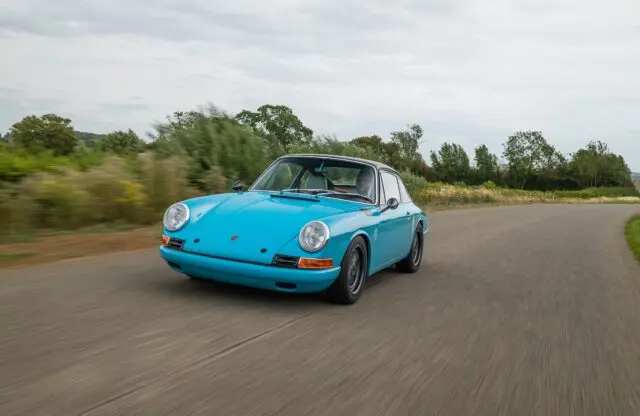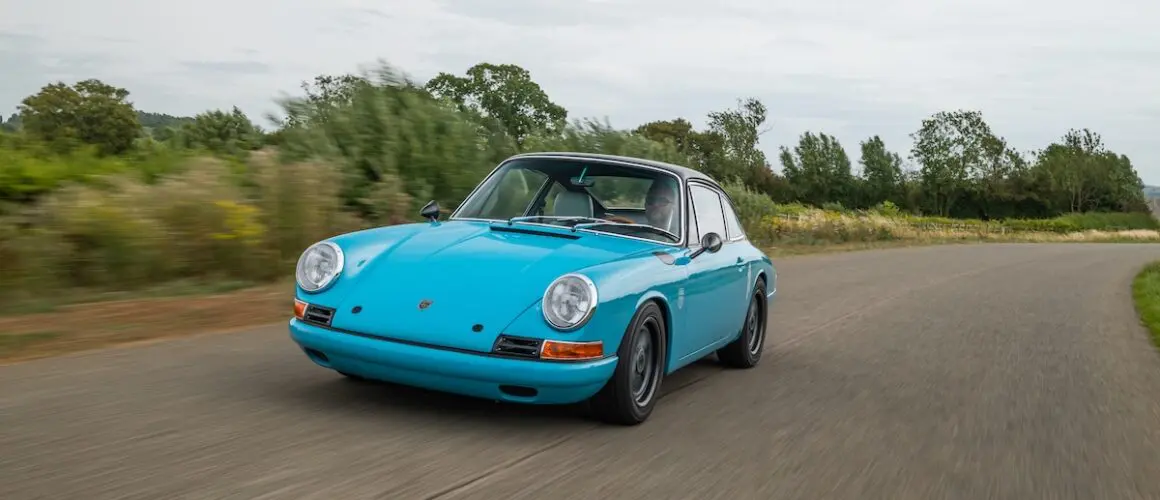A carbonfibre-bodied Porsche 912? The gut-reaction first question must surely be ‘why?’. The 912 was always the poor cousin of the range, and the explosion in 911 desirability and mostly 964-based restomods has pushed the flat-four cylinder baby of the range even further into the shadows. To treat a 912 to such an expensive makeover is… unusual to say the least.
And yet, if you really know your Porsches, and appreciate the purity of the early short-wheelbase models, you’ll know there’s something special about the 1965-69 912. Sure, it has two fewer cylinders than the 911, but those extra cylinders constitute less weight hanging out behind the tricky swing axle, to the point that a 912 always handles in the way that you’d wish the first 911s did – especially if you’ve ever pushed hard in an early six-cylinder.
Despite this, the gulf between values of early 911s and the 912 (and we’re ignoring the later 1975-76 912E here, which is a different beast entirely) has only continued to widen. So, once again, why?
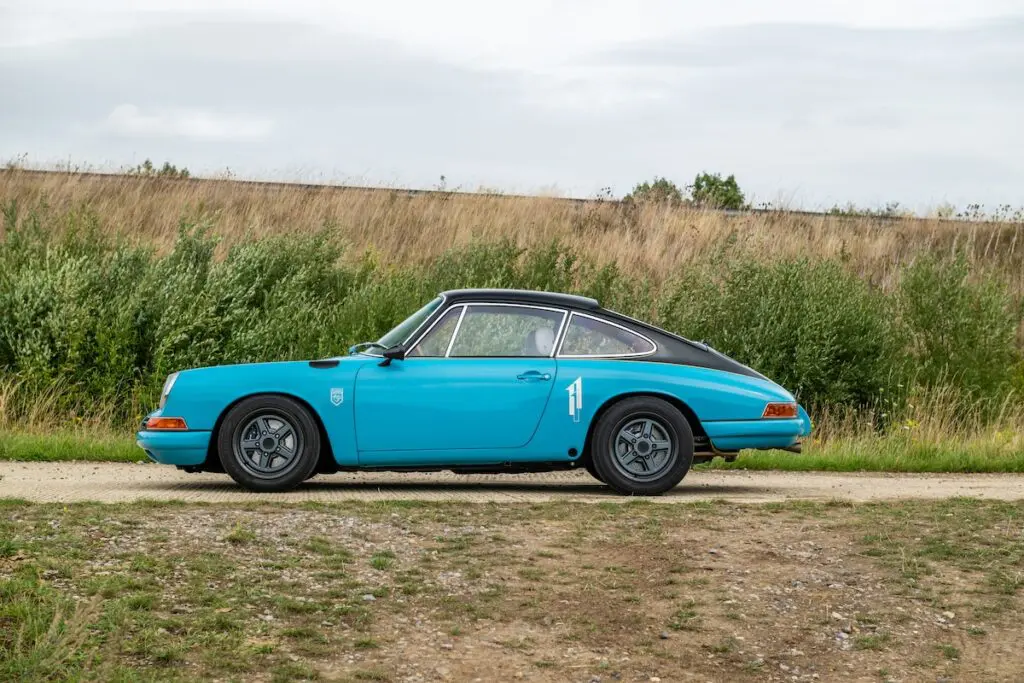
KAMM founder Miki Kázmér’s answer is simple: “The idea in the beginning was to build a tribute to the 911 R, so I bought a 912 as a donor. And this is where the whole thing started to turn around a little bit. I’ve driven short-wheelbase 911s; because the engine is not balanced with the suspension and the brakes, you really have to be a very brave driver and also a very experienced driver, to drive those cars on a level where you would enjoy it.
“With the 912 it was the quite the opposite. It was way more balanced; the suspension, the brakes, because they’re the same, just the engine is different. Although it was just 95bhp, I had more fun driving that car than a 911. So we started doing the 911 R in a 912 – and that was how it all started.”
This 912c, finished in a customer’s striking but perhaps divisive colour scheme, represents the latest evolution of that early project, with an in-house-made full carbonfibre body, a bored-out, fuel-injected 912 engine and a re-engineered Type 901 five-speed gearbox. As a taster, it weighs a smidge over 700kg and produces 182bhp.
Who is Miki and what is KAMM in this world of ever-increasing restomod companies – some of which are little more than an enticing digital render and an enthusiastic Instagram campaign. Well, Miki is a successful film maker and amateur racing driver turned successful businessman. KAMM is one of his several companies, based in Miki’s native Hungary, in a purpose-built factory with 15 people, including ex-Singer, ex-Dallara and ex-Aston Martin Valkyrie project engineers, and the engine was designed by the engineers who did the engine work for Koenigsegg. They’re not messing around.
And now let’s get to the important part, because there’s no point talking about employee numbers if the product is duff.
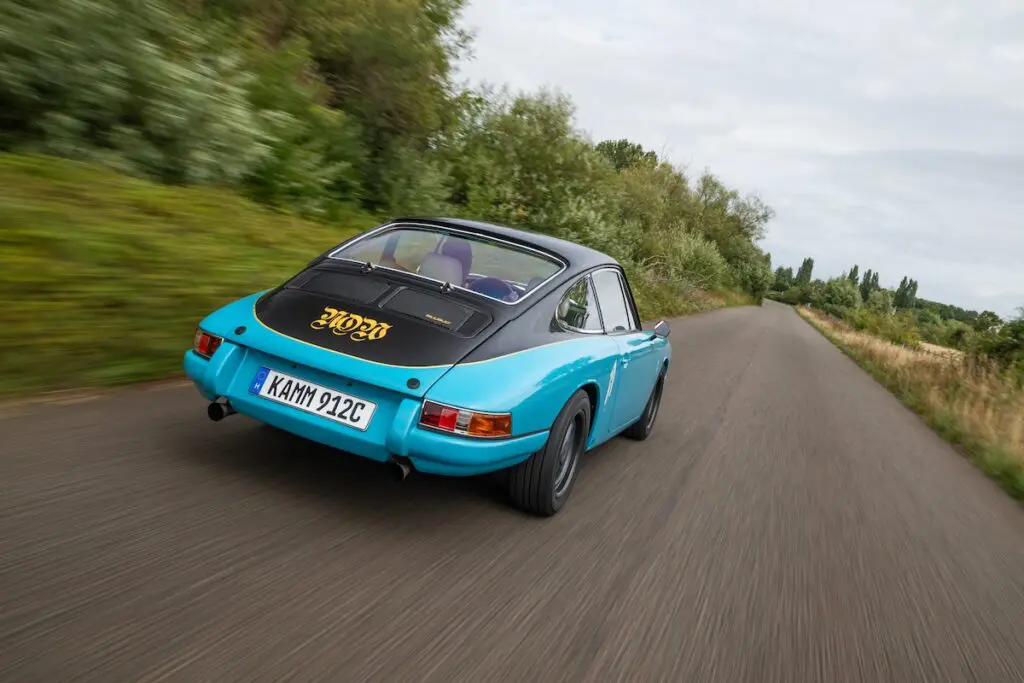
I missed out on the first round of KAMM 912 drives, with the mostly steel model. Because of that, I was rudely assuming that a small, relatively new company plus a full carbon body substitution could equal disaster, or at the very least an extremely crude ride.
Still, the fit and finish looks good – really good – and Miki talks a good talk. The 912c is rolled out of its temporary home in the Hagerty Clubhouse at Bicester Heritage and I’m handed the keys. This example has been specified with the reclining option Fusina carbon-composite seats rather than the lighter bucket equivalents, along with a neatly fitted electric heater and air-con unit (if you’ve experienced the original’s heating, you’ll know why).
Conversely, it’s also fitted out with thin Lexan windows to the side and rear, and it has no soundproofing at all, at the customer’s request. This could be noisy.
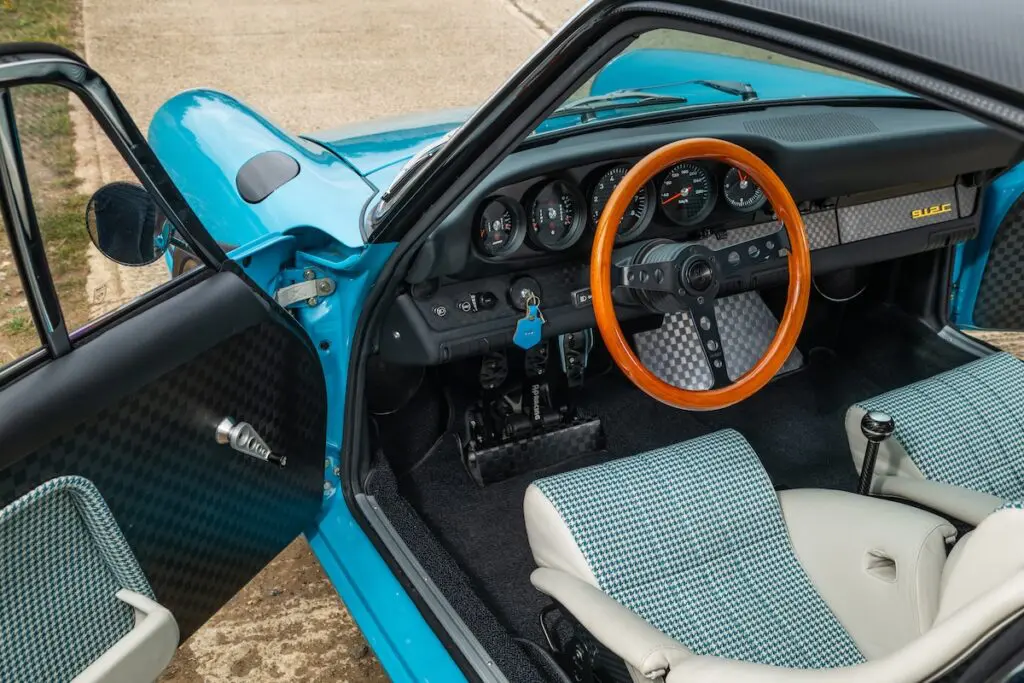
There’s a pull-and-twist lock-out knob on the all-new gearshift mechanism, to protect against a nasty mis-shift on the inherently vague gearbox of these early Porsches. The shifter is further back in the car than the original – a welcome modification – and reaching down between the seats to reach the lock-out feels fiddly at first but quickly becomes second nature.
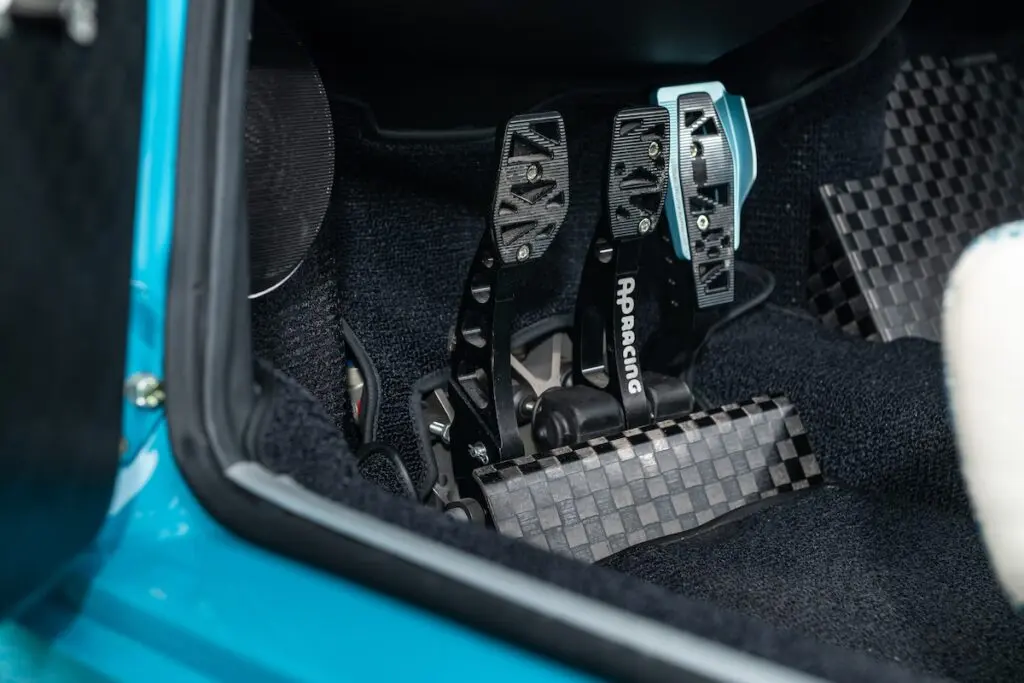
The pedals are modern replacements that feel far more precise than the originals – but they’re still offset to the centre of the car, and they’re still hinged from the base, so retaining a crucial Porsche characteristic. The steering, too, is immediately light and precise, another positive trait of these early cars.
And the engine? Well it feels responsive and sharp, and way more refined than I was expecting. But we’re only pootling out of the Bicester grounds, so let’s not get carried away yet.
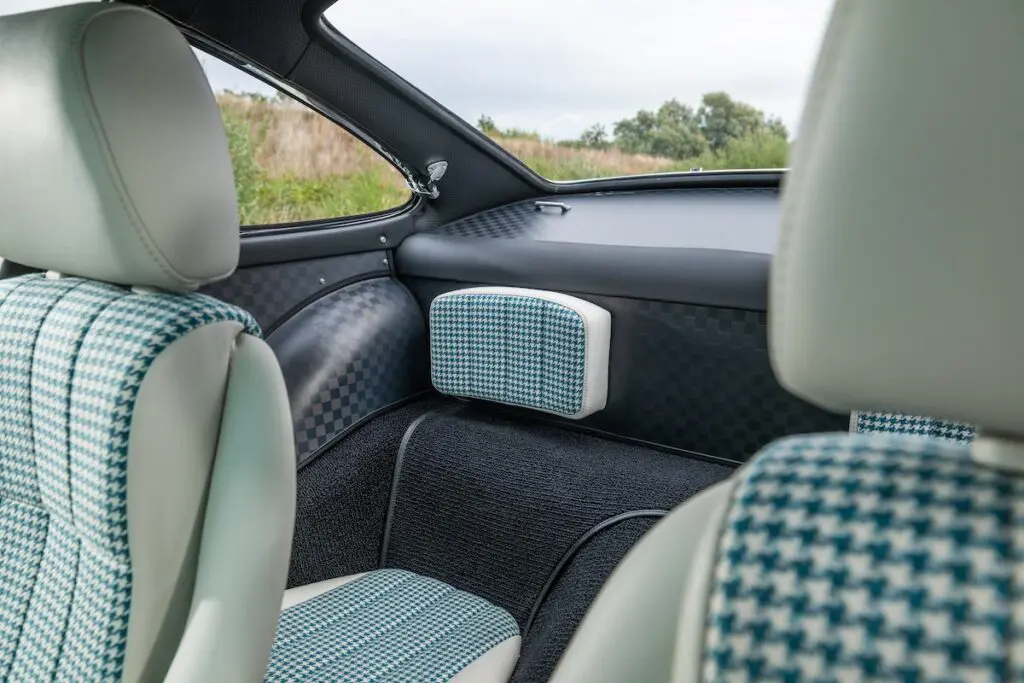
Carefully over the last speed bump, left out of the main gate and we’re off, out onto familiar roads. Without much of a plan I instinctively double back around the roundabout – the 912c feeling light yet planted – and head towards Buckingham, through the Oxfordshire countryside on the gently curving A4421. I immediately warm to this precise little car.
Did I say precise? Well the shift still takes some getting used to, especially while remembering the dog-leg layout of first to the far left and back, and second to fifth in a conventional H pattern. There’s a plan to create an all-new gearbox in the physical style of the 901, but that won’t come cheap.
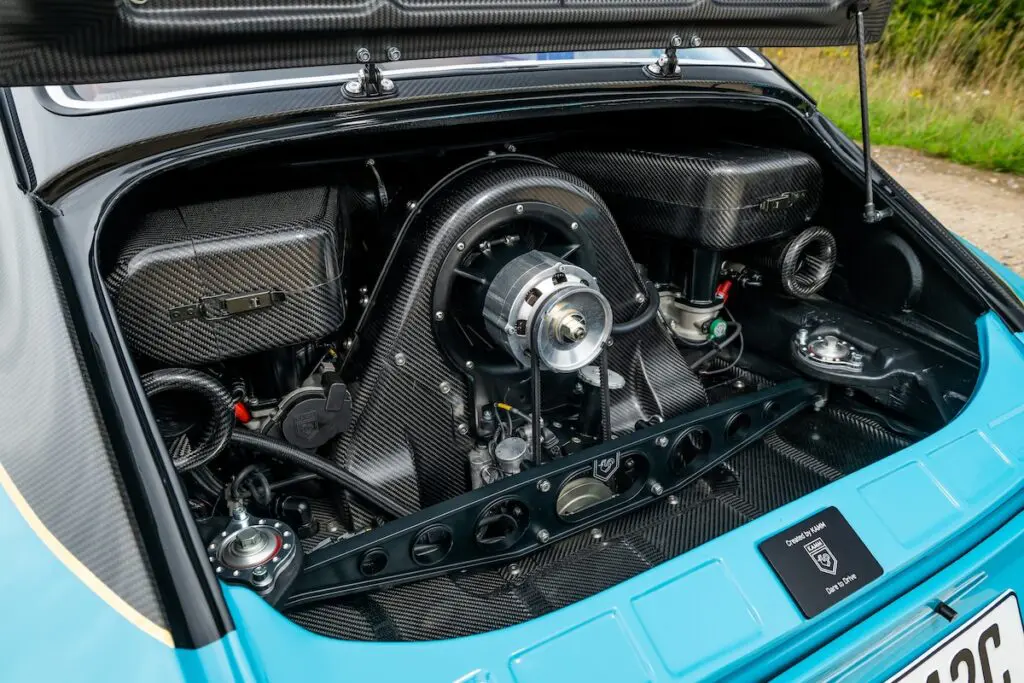
Now I can really start to appreciate the engine. It’s a lovely thing, with a wider spread of torque than seems reasonable for a relatively small-capacity engine that’s been tuned to almost double its original 912-spec output. Then again, this is a full, expensive reworking, with new, large-bore cylinder barrels taking capacity from 1600cc to near 2.0 litres, along with KAMM-modified versions of aftermarket billet cylinder heads providing much-improved gasflow.
A strengthened cylinder block and new crankshaft ensure bottom-end strength, and fully mapped engine control and downdraught aftermarket fuel-injection throttle bodies fed from a custom-made airbox allow a hot camshaft to be run without sacrificing low-down tractability.
Of course, it will still bog down if you catch yourself out in too high a gear, yet there’s no hesitation at any point through the rev range. It red lines at 7500rpm but there’s rarely a need to push past 6500rpm, where peak power occurs. Crucially, it’s producing 150Nm of torque by 2000rpm and 244Nm by 4500rpm.
And is it loud? Yes, but not unbearably so, and it’s clear that much of the noise is coming via the un-soundproofed cavities behind the B-posts and through the thin windows. This isn’t a motorway car, although the customer-specified high gearing and near-overdrive top gear ratio do bring down the revs in fifth.
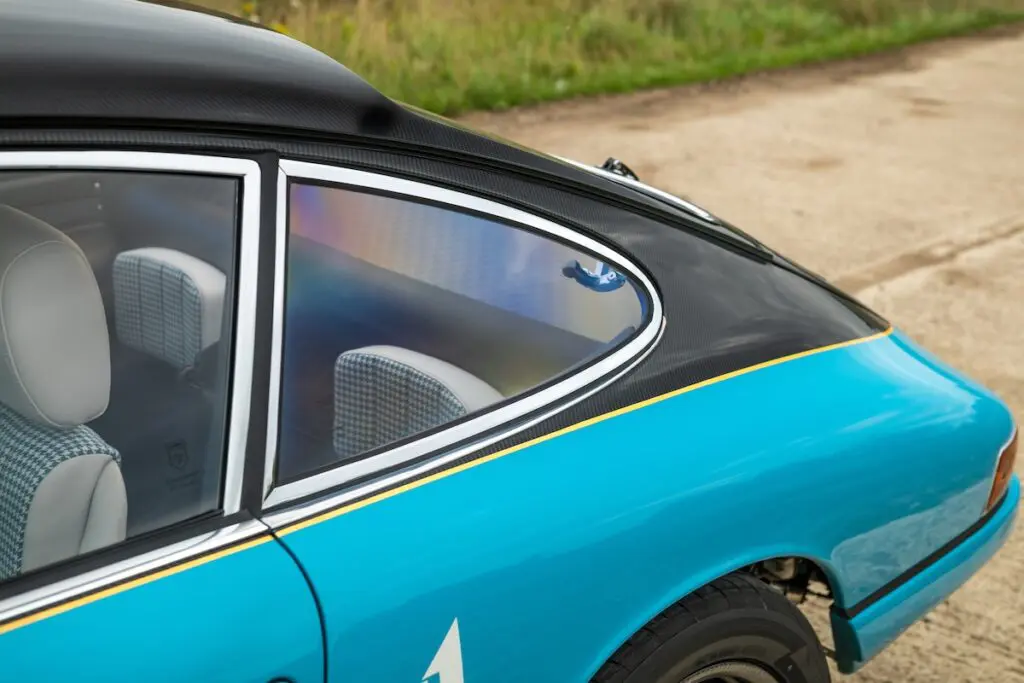
But country roads are the 912c’s forté. In third and fourth it’s just delicious, the engine strongest between 3000rpm and 6000rpm, the exhaust singing, the intakes roaring.
Want a little more fun? Then would sir or madam like to sample DMC mode, by pulling the knob to the left of the steering column? What does DMC stand for? ‘Drive Me Crazy’. Of course it does – but to be fair, it does exactly what it says on the, err, knob. The throttle response quickens, a valve opens in the titanium exhaust and the KAMM feels more alive and significantly noisier, adding a few antisocial exhaust pops to the cacophony on the overrun.
Driven this enthusiastically, a short-wheelbase 911 might have served up a few ‘interesting’ handling moments, but there’s no such bad behaviour from the KAMM. As with the rest of the car, the suspension has been extensively reworked without changing the basic layout, so there are still torsion bars rather than coil springs at both ends, and the rear end is still trailing arms. The dampers are electronically adjustable TracTive units, though, and KAMM has resisted the temptation to add anti-roll bars, finding that the 912c behaved better without them.
The brakes too are transformed. Again, the basics are unchanged but comprehensively upgraded.

On its unusual lightweight carbonfibre and refreshingly small 15in wheels and Yokohama tyres, the 912c rides well for such a light, modified car, with UK country roads best handled with the dash-mounted damper adjustment dialled down to its softest setting or up to halfway if you’re feeling particularly speedy. Even in that setting the grip is uncannily strong. If there’s a downside, the KAMM has lost a little of the characteristic chatter through the steering wheel, but there’s still more than enough feedback and much sharper response.
I return to base after about an hour on all kinds of roads, grinning like a fool and enthusiastically proclaiming that I’ve had the most fun driving of the past few months. And I really have. How much of this is down to the carbon bodywork and how much is due to the superb engine and suspension set-up? I’m not sure, because the ‘basic’ KAMM 912 weighs a mere 850kg and the half-carbon (front wings, bonnet and doors) version is only 750kg – but it has reminded me of how overlooked the original 912 still is, after all these years, and it makes me want a restomod 912 very much.
KAMM will build one to any specification, so I’d choose a little more soundproofing and thicker windows but keep the rest of the package as minimal as possible. Most of all, I’d stump up for the same engine and suspension as this car. And then I’d drive the nuts off it, happy with my revvy four cylinders.
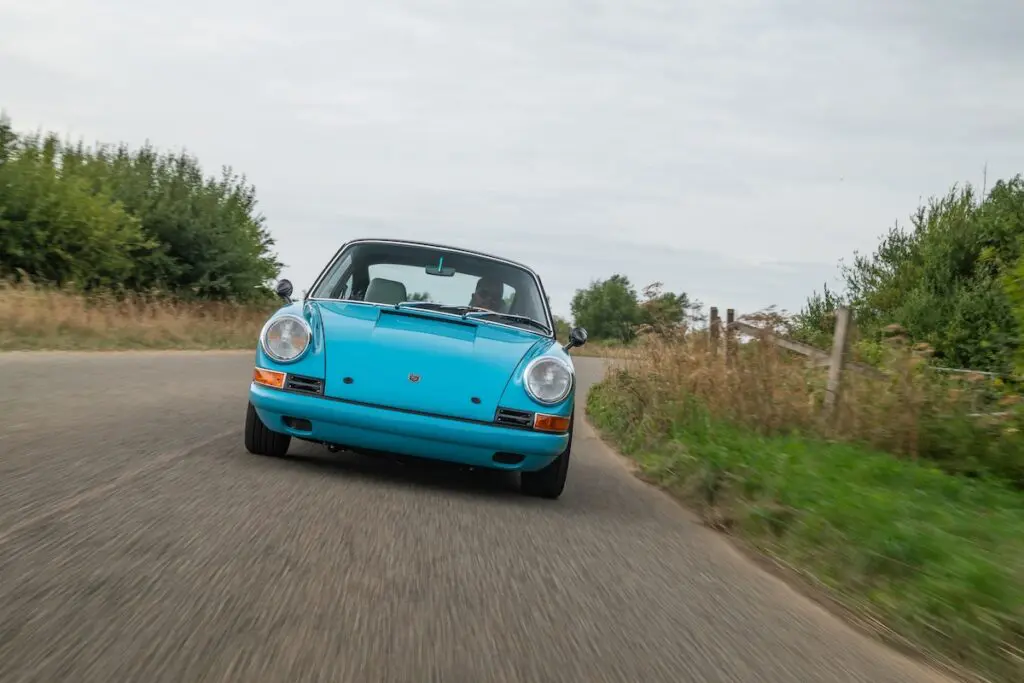
You can find out more about KAMM here.
